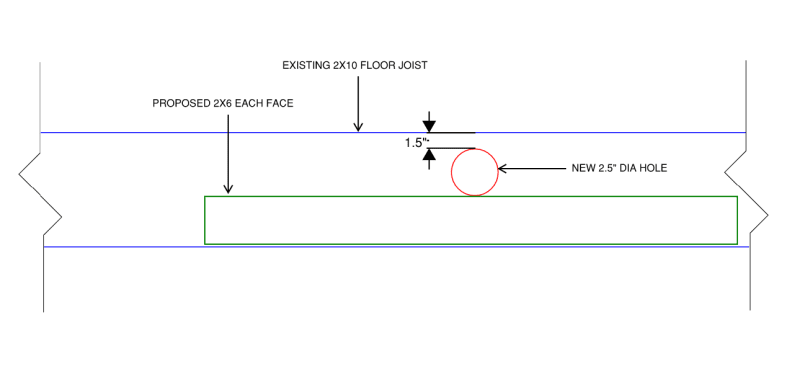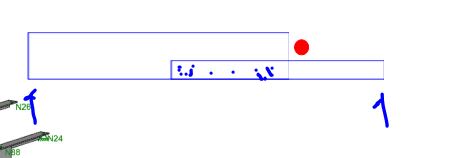TRAK.Structural
Structural
- Dec 27, 2023
- 304
I've got a client who needs a fix for a wood floor joist that had a hole cut too close to the top edge of the member (see below). I'm considering trying to analyze this with a 2x6 spliced on to each face of the existing joist. My thought is that as long as the flexural and shear stresses of the effective section at the hole (essentially (3)2x6) are within the allowables that this works. Obviously I need to provide enough fasteners to justify composite action but I think that is do-able.
Any other approaches folks have used in the past?
I've seen some of the metal reinforcing plate products for holes and notches but seems like those have very specific situations where they have been tested which limits the applications where they can be used.

Any other approaches folks have used in the past?
I've seen some of the metal reinforcing plate products for holes and notches but seems like those have very specific situations where they have been tested which limits the applications where they can be used.


